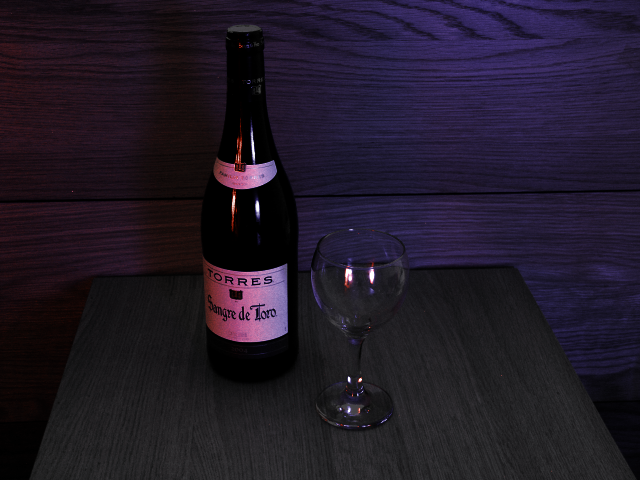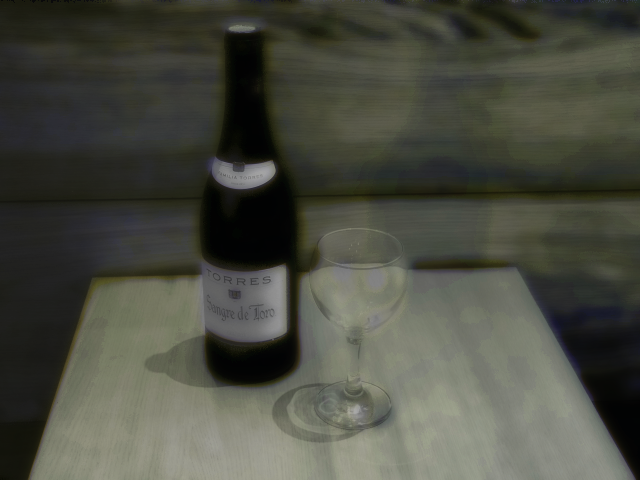Paul Debevec is a computer graphics researcher who among other things has made the amazing short film Fiat Lux. I found his acquire the reflectance field of a human face to be an interesting piece of work (and the theory of it is not as complicated as it sounds; it's building the hardware that is the hard part). The movie (19.6 MB Quicktime, 148 MB DivX) explains it well. In the beginning of that video he's got a simple example using just two lights. I got inspired to try something similar, but with a bit more limited resources in terms of mechanical devices.

I placed a bottle of wine and a wine glass on a table. Then I lit them from different directions. I don't actually have any lamp that can be moved around, so I simply switched each light in my apartment on, one at a time, and took a photo. The image to the right shows three of the resulting photographs.
Afterwards, I could mix the pictures in any way. I put each photo as a layer in the Gimp, and changed their blending to Additive. Then I could start playing around with the colors and intensity of the layers. I like the effect I got when I tinted the pictures in different colors, which I did in the picture below. It can give the impression that you have used colored filters on the lights.

It can be used for truly surreal images if you experiment with other blending modes or apply filters to the images. In the picture below, I used blurring and other effects on the photos.

These simple tests, while not terribly impressive, give a hint of the kind of visual effects you can achieve with this technique. Next step for me is to go and buy a small lamp that I can move around, and arrange a more interesting still life. I also got an idea of how to get this effect in moving images. That would be fun!
Previous: Recruitment underway
Next: Video marathon